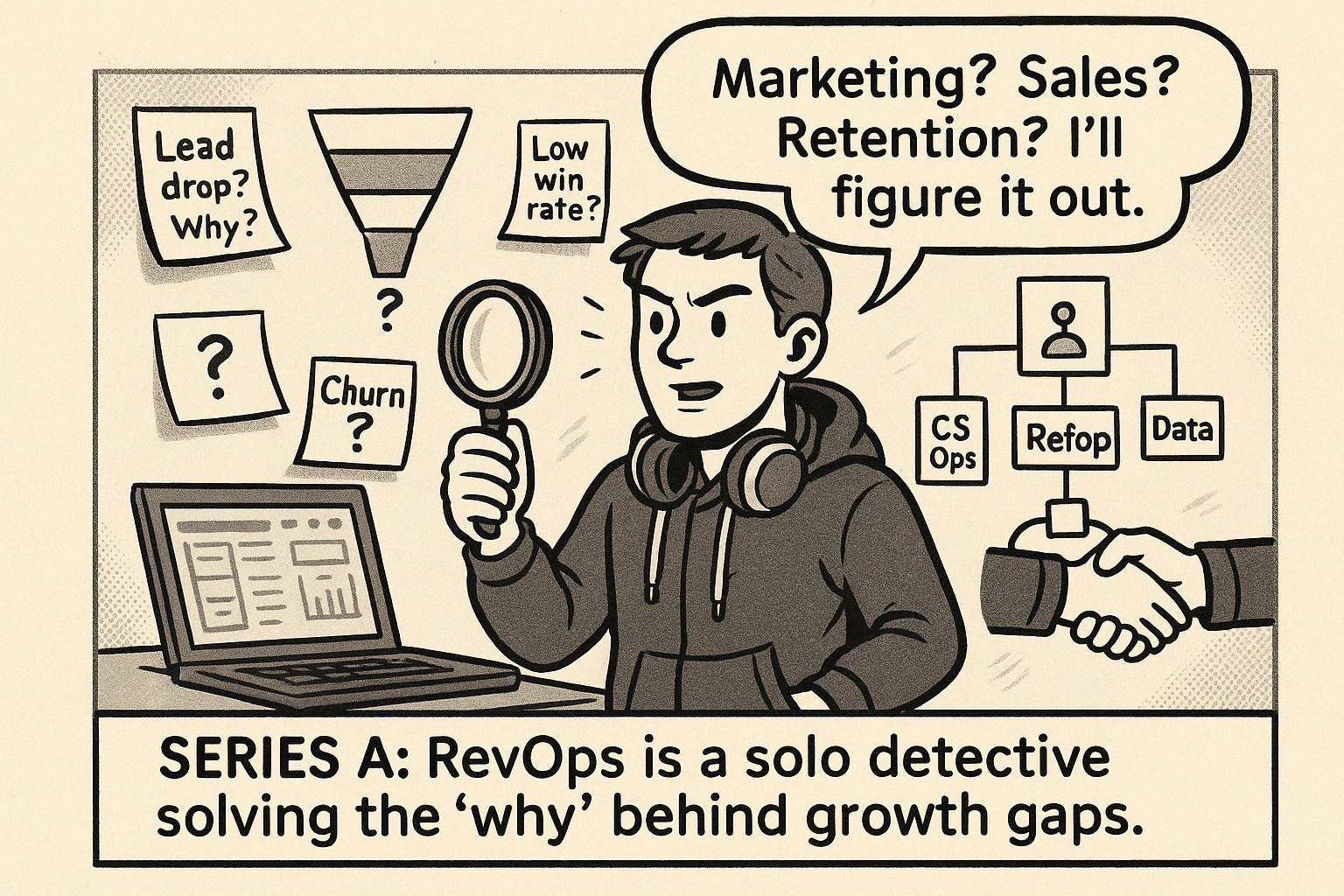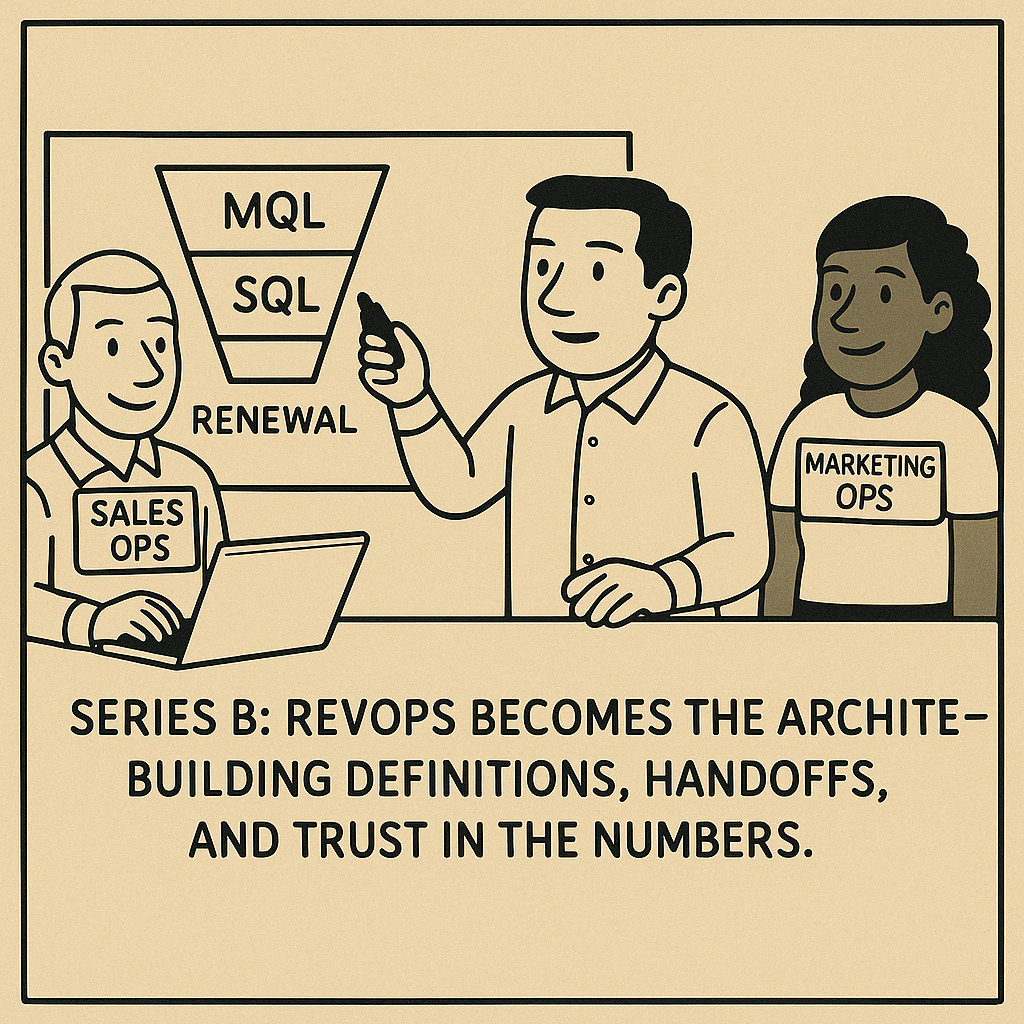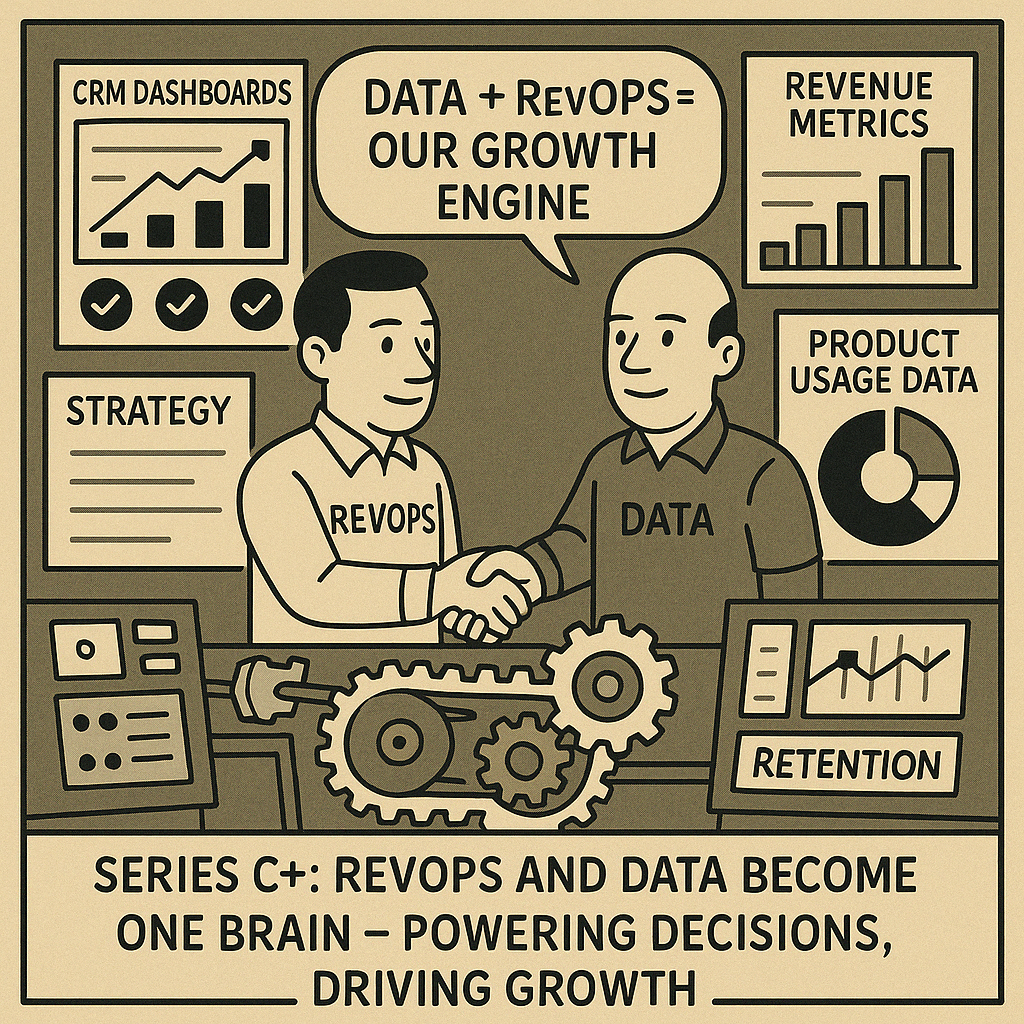How to Structure RevOps and Data Teams for Funnel Visibility
- Realign your org for RevOps success: Unite Sales, Marketing, and CS under a common leadership (e.g. a CRO) focused on the entire customer journey.
- Start with versatile RevOps talent: Early stages require generalists who can oversee full-funnel operations and align teams.
- Embed analytics expertise: Build or partner with Data teams to create a single source of truth for revenue metrics.
- Clarify funnel definitions and SLAs: Align all teams on shared stage definitions (MQL, SQL, SAL) and handoff processes.
- Foster constant alignment: Use shared KPIs and regular meetings to drive a "one team, one funnel" culture — because silos kill growth.
Why Team Structure Matters for Funnel Visibility
To achieve true funnel visibility, people and processes matter just as much as tools. A modern RevOps function breaks down the traditional silos between departments, ensuring that every team is rowing in the same direction toward unified revenue goals. Instead of separate Sales, Marketing, and Customer Success teams chasing isolated targets, companies are increasingly adopting a Chief Revenue Officer (CRO) model — overseeing demand generation, pipeline management, and post-sales success under one umbrella. This alignment mirrors the full customer journey across the revenue funnel — reducing friction and preventing leads or customers from slipping through the cracks.
Building a RevOps Team at Series A
At the Series A stage, a "RevOps team" may start with just one versatile individual: a RevOps generalist. This person must have a top-to-bottom view of the funnel — understanding marketing operations, sales dynamics, and basic analytics.
Common early RevOps profiles:
- Head of Operations
- Business Operations Generalist
- Data-savvy Founder/COO
Their goal is to identify revenue bottlenecks across the funnel, trace issues to root causes, and lay the groundwork for scalable processes.
 Learn why full-funnel visibility is critical in Chapter 1.
Learn why full-funnel visibility is critical in Chapter 1.
Scaling RevOps at Series B
By Series B, startups typically formalize their RevOps function.
New roles often include:
- Director or VP of RevOps
- Specialists in Sales Operations, Marketing Operations, Customer Success Operations
Key focus areas:
- Standardizing definitions (e.g., What qualifies as an MQL?)
- Streamlining handoffs between Marketing and Sales
- Tracking metrics that matter to the board
Many companies embed Data Analysts directly into RevOps to ensure data-driven funnel visibility

RevOps and Data at Series C+
At this stage, RevOps and Data teams must collaborate tightly.
Best practice models:
- Dedicated Revenue Analyst embedded in RevOps
- Shared access to a centralized data warehouse and CRM
- Tight alignment on revenue reporting frameworks
Whether Data reports to the CTO or CFO, and RevOps to the CRO or COO — collaboration is non-negotiable.
RevOps defines business processes;
Data Engineering ensures the pipelines, dashboards, and reporting systems support them.

Embedding Funnel Metrics and SLAs
Achieving funnel visibility requires clear definitions across teams:
- Marketing Qualified Lead (MQL)
- Sales Accepted Lead (SAL)
- Sales Qualified Opportunity (SQO)
Also critical: service level agreements (SLAs).
Examples:
- Marketing must pass only leads meeting agreed criteria.
- Sales must follow up on leads within a specific timeframe.
Shared metrics (e.g., pipeline coverage, revenue growth, retention) foster joint accountability and prevent finger-pointing.
Culture of Alignment: One Team, One Funnel
Building a RevOps structure is an evolution, not a one-time event.
Start scrappy, then add specialization.
The unifying thread must be constant alignment:
- Regular cross-functional revenue meetings
- Centralized reporting dashboards for cross-functional analysis.
- Clear executive sponsorship for "One Funnel" mindset
The RevOps lead (even if wearing multiple hats) acts as the air-traffic controller for revenue operations, ensuring every department’s efforts harmonize into a single, cohesive strategy.